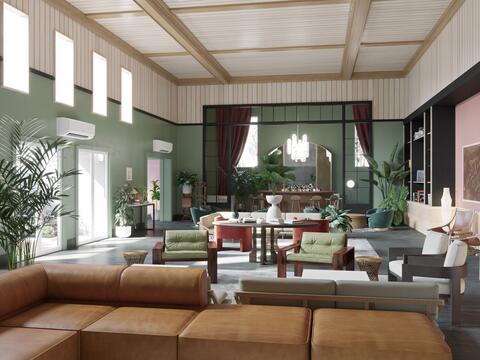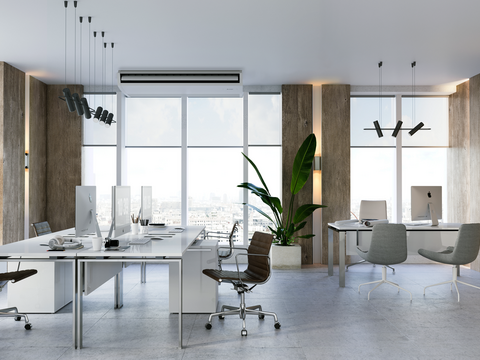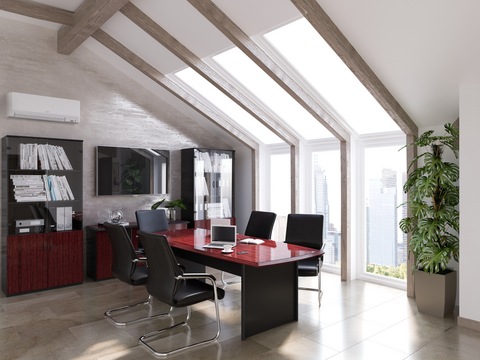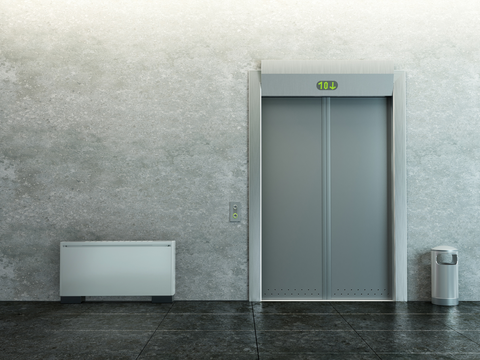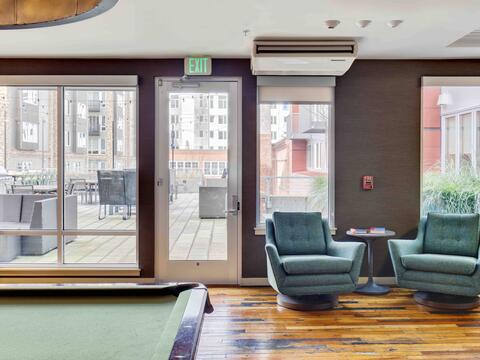A Retrospect on American Design: Modernist Architecture
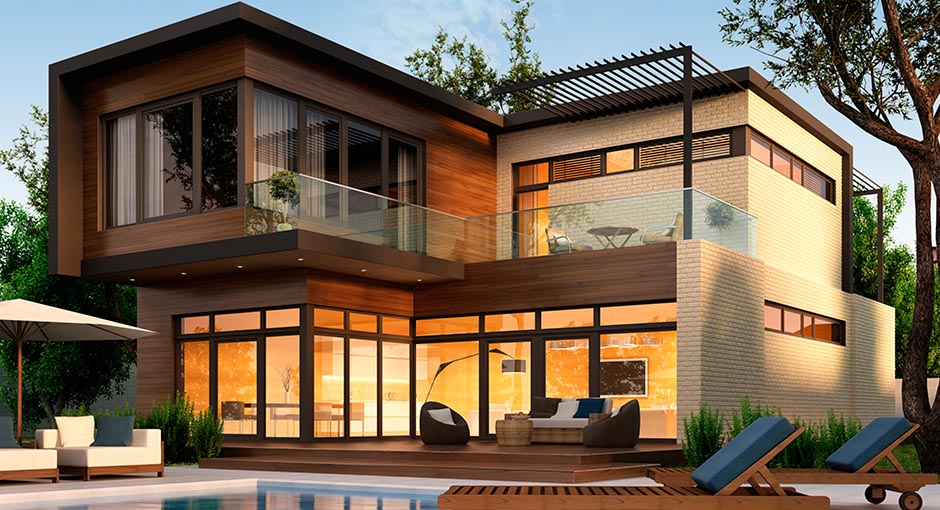
Finding beauty in function, modernist architecture emerged in the early 20th century, and stripped away unnecessary decorative elements from past styles to create a more elegant, straight-forward approach to daily life. The movement revolutionized architecture and design in its heyday.
This article explores the ideas behind modernist architecture, and the role HVAC plays in the style.
THE ROOTS OF MODERNISM
Embracing simplicity with bright, open floor plans, early modernist homes re-imagined how indoor space should be used.
At the turn of the last century, Victorian mansions and neo-classical blueprints were the style du jour, but forward-thinking designers and architects craved a different approach. On a mission to shake things up, American architect Frank Lloyd Wright founded the prairie style, with strong, Japanese overtones that included an emphasis on simplicity and organic “flow.”
DESIGN & ARCHITECTURAL ELEMENTS
From simple cubes and rectangles to sprawling, multi-level complexes, modernist designs embraced wood, glass, concrete, steel or composites.
One of the telltale signs of a modernist home is its shape: chances are it’s rectangular, or cube-like, with a flat or low-pitched roof. A great example of this early style can be seen in Wright’s Robie House, a residential design that features ample windows, overhanging eaves, a horizontal roof and a spacious, open living area.
The multi-level designs of later modernist homes made for a radically different floor plan. Overall, main living areas tended to give an ample impression of light and space, with an emphasis on floor-to-ceiling windows and plenty of breathing room. This arrangement is meant to evoke a peaceful, relaxed state of mind in line with the modernist movement’s main principles of simplicity. Within these areas, an exposed or floating staircase is often used, so the feeling of continuous space, from air flow to light, isn’t disrupted.
Keeping with an open floor plan, kitchens are often placed close to the main living space, and are usually generous, simple and to the point. Loft-style sleeping areas are commonly seen, offering an alternative to cluttered, space-consuming bedrooms.
THE EVOLUTION OF MODERNISM
At your next dinner party, mentioning Le Corbusier, the Swiss-French trailblazer that founded Modernist architecture, may earn you a few extra “cool points.” Since the early days, many sub styles and genres of modernism were founded and continue to emerge both in commercial and residential spaces. The Bauhaus style, which embraced pure, classical architecture without ornamentation of any kind, catalyzed from modernist ideals. Neo modernism, centered on creating monolithic and functional buildings, was also an offshoot of earlier modernist styles.
MODERNISM TODAY
Later modernist designs, still around today, embrace many of the same principles that Wright held dear, but with more emphasis on minimalism and prefabrication. Many homes, from luxury mansions to the smallest micro homes, still make use of basic modernist principles. Today, one hundred years after the prairie style of architecture caught on, modernism and its various offshoots are still on the cutting edge of home design.
THE ROLE OF HVAC
The simple design of many modern indoor heating and air conditioning units plays well into modernist architecture’s ideals. Wall-mounted units are designed to be sleek and complementary of nearly any surrounding design preferences. And their ductless design contributes to a more open space since soffits aren’t required. Ceiling-recessed units are so flush to the ceiling they are barely noticeable, perfect for homeowners with modernist, “less-is-more” taste.
Additionally, modernist homes’ open floorplans mean less room for disrupted airflow. Homeowners can adequately condition an entire home with fewer units. The less disrupted wall and ceiling space, the better for homeowners looking for simplicity.


